
Selecting the perfect dress for any occasion is an art that combines personal style, occasion appropriateness, and current fashion trends. Whether you’re attending a formal event, a casual gathering, or a professional meeting, the right dress can make a powerful statement. This guide aims to provide a comprehensive overview of how to choose the perfect dress for various occasions, ensuring you not only look your best but also feel confident and comfortable.
In today’s fast-paced and visually-driven world, personal style and confidence are more than just superficial attributes; they are powerful tools that can influence how individuals perceive themselves and how they are perceived by others. This blog section delves into the intricate relationship between personal style and confidence, exploring how they impact personal and professional life, and offering insights into cultivating both.
Personal style is an expression of individuality. It is a unique combination of fashion choices, grooming habits, and the way one carries oneself. Unlike fleeting fashion trends, personal style is enduring and evolves with an individual over time. It is a reflection of one’s personality, values, and experiences. Understanding and developing personal style is a journey of self-discovery. It involves recognizing what resonates with you, what makes you feel comfortable, and what aligns with your identity.
The significance of personal style extends beyond aesthetics. It acts as a form of non-verbal communication, conveying messages about who you are and what you stand for. In professional settings, personal style can influence first impressions and impact career advancement. A well-curated personal style can convey professionalism, attention to detail, and confidence, qualities that are often valued in the workplace.
In professional environments, dress codes often reflect the culture and values of an organization. For women, understanding these codes is essential for making a positive impression and demonstrating professionalism. In corporate settings, where formal attire is typically expected, adhering to the dress code can convey competence and respect for the workplace culture. Women who understand and align with these expectations are often perceived as more credible and capable, which can influence career advancement opportunities.
Understanding dress codes is crucial in navigating both professional and social environments. Dress codes serve as a guide for individuals to present themselves appropriately in various settings. For women, formal dress codes can sometimes be intricate, as they are often laden with nuanced expectations and traditions. This section will delve into the importance of understanding formal dress codes for women, highlighting key elements and offering insights into how these codes can impact personal and professional interactions.



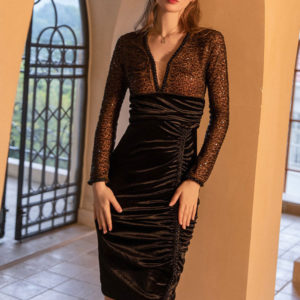


As we conclude our exploration of casual dress, it’s clear that this style embodies much more than just a relaxed approach to clothing. It represents a significant shift in societal norms and workplace cultures, reflecting a broader acceptance of individuality and comfort in our daily lives. The casual dress code, once relegated to weekends and informal gatherings, has now permeated nearly every aspect of our lives, from the office to social events, and even into the realm of virtual interactions




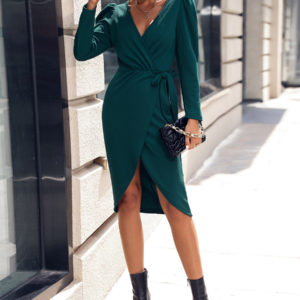

In the world of fashion, the art of dress selection is not merely about putting together aesthetically pleasing outfits; it’s about understanding the nuances of various occasions and dressing accordingly. Whether it’s a formal gala, a casual brunch, or a professional meeting, selecting the right attire is crucial for making a lasting impression. This section delves into the intricacies of occasion-specific dress selection, offering insights and guidelines to ensure that your wardrobe choices are always on point.
The wedding dress is not merely a garment; it is a symbol of romance, tradition, and personal expression. As one of the most significant pieces of clothing a woman may ever wear, the wedding dress holds a unique place in the fashion world and in the hearts of brides across the globe. This piece of attire is steeped in history and cultural significance, evolving through the ages while maintaining its status as a central element of the wedding ceremony. In this section, we will explore the allure of the wedding dress, delving into its history, the variety of styles available, and the considerations that go into choosing the perfect dress.
Navigating the world of business events can be a complex endeavor, particularly when it comes to striking the right balance between professionalism and personal style. From conferences and networking events to corporate galas and client meetings, each occasion demands a thoughtful approach to attire. Dressing appropriately not only reflects your respect for the event and its participants but also showcases your personal brand. In this section, we delve into the nuances of achieving this balance, offering insights and guidelines to help you make a lasting impression.



The cocktail dress has long been a staple in the world of fashion, embodying a sense of elegance and versatility that few other garments can match. Its origins trace back to the 1920s, a period characterized by social change and the emergence of new cultural norms. During this era, women began to embrace more liberated lifestyles, and the cocktail dress emerged as a symbol of this newfound freedom. Initially, these dresses were designed to be worn for late-afternoon or early-evening social gatherings, aptly named “cocktail parties.” The style was intended to bridge the gap between the casual and the formal, offering a sophisticated yet approachable look.



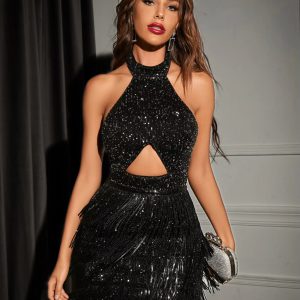
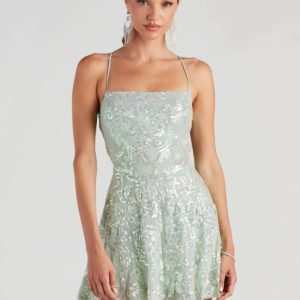

Fabric is the primary material from which garments are crafted, and its selection is a critical step in the design and production process. The choice of fabric determines not only the aesthetic appeal of a garment but also its comfort, durability, and suitability for various occasions. Fabrics can be broadly categorized into natural and synthetic materials. Natural fabrics, such as cotton, wool, silk, and linen, are derived from plants or animals and are known for their comfort and breathability. On the other hand, synthetic fabrics like polyester, nylon, and acrylic are man-made and often prized for their durability and ease of care.
In the world of fashion, the choice of fabric is as crucial as the design itself. It can make or break an outfit, influencing not only how it looks but also how it feels. The interplay between fabric and fit is pivotal in defining the overall experience of wearing a garment. This section delves into the intricate relationship between fabric choice and its impact on both comfort and style, providing insights into why this consideration is essential for both designers and consumers.
Accessorizing is not just about adding a necklace or a pair of earrings; it is about creating a harmonious balance that elevates the entire outfit. Accessories have the power to change the perception of clothing, adding depth and interest to even the most basic pieces. They serve as a bridge between fashion and personal expression, allowing individuals to convey their unique style and personality.
In professional settings, accessories can be particularly impactful. A well-chosen accessory can project confidence and attention to detail, which are critical attributes in the workplace. For instance, a sleek watch or a tasteful pair of cufflinks can enhance a business suit, while a statement handbag can add a touch of sophistication to a corporate ensemble. Understanding how to accessorize effectively can thus play a crucial role in making a lasting impression.
In the world of fashion, the right accessories can make or break an outfit. They have the power to enhance your ensemble, reflect your personal style, and even boost your confidence. However, selecting complementary accessories can be a nuanced task that requires a keen eye for detail and an understanding of balance and proportion. In this section, we will explore the art of choosing accessories that not only complement your outfit but also elevate your overall appearance.
Shoes are often considered the foundation of an outfit, both literally and figuratively. They not only support the body but also set the tone for the entire ensemble. The choice of footwear can transform a casual outfit into a formal one, or vice versa. For instance, pairing a sleek pair of stilettos with a simple dress can elevate the look to one suitable for an evening event, while sneakers can make the same dress appear more relaxed and appropriate for daytime wear. The versatility of shoes allows them to act as a bridge between different styles, making them an essential component in completing a look.






Bags are more than just a practical necessity; they are a fundamental element of fashion that can significantly influence the overall aesthetic of an outfit. A well-chosen bag can serve as a statement piece, adding a pop of color or an unexpected texture to a look. For example, a bold, structured handbag can add sophistication and drama to a minimalist outfit, while a slouchy tote can lend a casual, effortless vibe. The ability of bags to complement or contrast with an outfit makes them an indispensable accessory in completing a look.



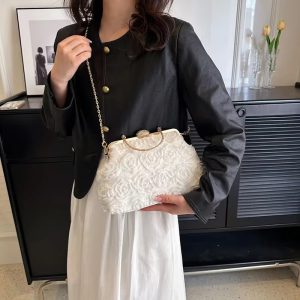

Jewelry has long been considered the finishing touch in fashion, adding an element of elegance and sophistication to any outfit. Whether it’s a pair of understated stud earrings or a bold statement necklace, jewelry has the power to transform an ensemble, enhancing its overall appeal. The choice of jewelry can highlight certain aspects of an outfit, such as the neckline or sleeve length, drawing attention to the wearer’s best features. This ability to accentuate and complement makes jewelry an essential component in completing a look.






n the quest for the perfect dress, the journey is as significant as the destination. Throughout this guide, we have explored the essential elements that contribute to making an informed and satisfying choice, ensuring that your selection not only meets your aesthetic desires but also complements your unique individuality. As we conclude, let us revisit the key points that will empower you in your future dress selections, fostering confidence and elegance in every step.
First and foremost, understanding your body type is crucial. Recognizing your silhouette allows you to choose styles that accentuate your best features and provide a flattering fit. Whether you have an hourglass, pear, apple, or rectangular shape, there are specific cuts and designs that will enhance your natural beauty. Embrace your body shape and let it guide your choices, ensuring comfort and confidence in any dress you wear.
[Address-CA]: 14-30 Eglinton Ave W, Suite 580, Mississauga, Ontario, L5R 0C1
[Tel-CA]: +1 647-874-5950
Email: sales@tdmercado.com